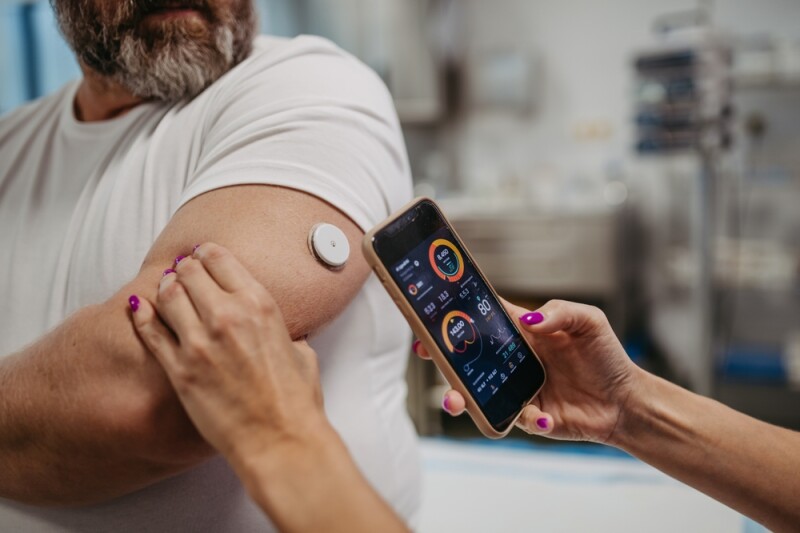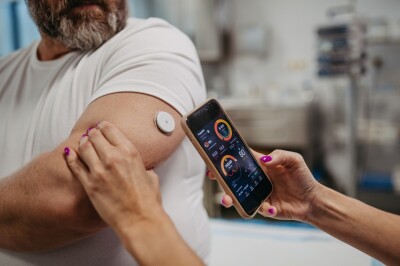E-Book Excerpt: How to Provide Emotional Support to Patients with Long-COVID

Ashley Drapeau MPAS, MAC, PA-C, L.Ac, who works with Kogan at GWCIM as its long COVID program director, said long COVID patients are highly educated individuals who do a lot of research on their own. These patients are very motivated, almost to the point of hyper motivation to find that one treatment that they feel can help them. The problem with this is that they can sometimes get fixated on that one result. Often times patients are inundated with information and the process of recovery can be overwhelming if there is not full support from their practitioner, she said.
“Many are not aware of the increasing suicide rate associated with long COVID,” she explained. “In my opinion, loneliness is the worst symptom of the disease.”
A January 2021 study in the journal, QJM, found “that there is a high probability that symptoms of psychiatric, neurological, and physical illnesses, as well as inflammatory damage to the brain in individuals with long COVID increased suicidal ideation and behavior in this patient population. COVID-19 survivors without post-COVID syndrome may also be at elevated suicide risk.”
While some people may have a lot of emotional support at home, others may have family members who don’t understand long COVID, and yet others don’t have support at all. As a survivor of long COVID, Drapeau said she likes to think of herself as someone who stands with them on the healing journey. She makes it a point to get back to her patients within 24 hours through the clinic’s electronic health records. She will share her personal journey with her patients, she said, not as a comparison but as a motivator and to demonstrate there is hope and they don’t have to do it alone.
1. Providing Connection and Community
Drapeau recommends her patients find long COVID patient support groups that already exist and to choose groups with people who have a similar lifestyle. This is important because it helps create a deeper connection and understanding of their condition when parallels exist between them.
At GWICM, Kogan and Drapeau launched telehealth support groups in September 2022 for long COVID patients through a shared medical group model. Kogan said this model can be very effective because patients are at home, but they feel the presence of community who are struggling with the same symptoms, which can be very profound for people. Patients from all states are accepted, and multiple groups run in parallel. Each group is limited in size to offer a deeper experience for all participants.
2. Offering Reassurance
The number one question Brunschwig fields from his long COVID patients is, “am I going to get better?” He assures them that his team will pull out all the stops in their recovery, and if the approaches aren’t working well, they will reorient and reprioritize. He makes it clear that if he doesn’t see a response early, he would want to explore why.
When it comes to emotionally supporting long COVID patients, Brunschwig said he reassures patients that they will have ongoing support. He said many of his patients have past experiences with doctors who left them not feeling better and looking for other solutions.
“The first thing is to say, ‘there’s no textbook [for long COVID], however we have learned a lot in the last two years.’” he said. “’We’re going to do our best and we are not going to leave you. We understand long COVID well enough that when treatment is not initially helpful, we have a good idea as to the next steps to recovery.’
Brunschwig said that these conversations with patients are especially important no matter how busy he gets. In addition, many of his long COVID patients are well-educated and informed about trending treatments and will bring these ideas to his team. For Brunschwig, he said it’s critical for patients to know they have a space and freedom to have those types of conversations with their doctor.
3. Validating Experiences and Addressing Trauma
A top priority for practitioners is to reassure their patients and validate what they are experiencing, according to Kaplan. “A lot of people get depressed and have problems with significant anxiety as part of [long COVID], but they’re not crazy, they have an inflamed brain, secondary to the infection itself," said Kaplan. "You need to treat everything you can in order to quiet down inflammation in the brain.”
In addition, practitioners may also need to address trauma with their long COVID patients, especially if they have spent time in the intensive care unit. With a trauma therapist on staff, Kaplan said eye movement desensitization and reprocessing [EMDR], cognitive behavior therapy and acupuncture can be helpful. Acupuncture in particular can be extremely effective for reducing inflammation in the brain and body, in addition to quieting down post-traumatic stress disorder (PTSD). Kaplan also said he provides manual therapy to mobilize trauma that gets stored in the body. His team also includes physical therapists, acupuncturists, and a nutritionist.
“We’re a team that is capable of working together to under- stand how best to treat these very complex and very sick people,” he said.
Editor’s Note: This is an expert from the e-book, Integrative Approaches to Long COVID. To access the full text, click here.




















SHARE